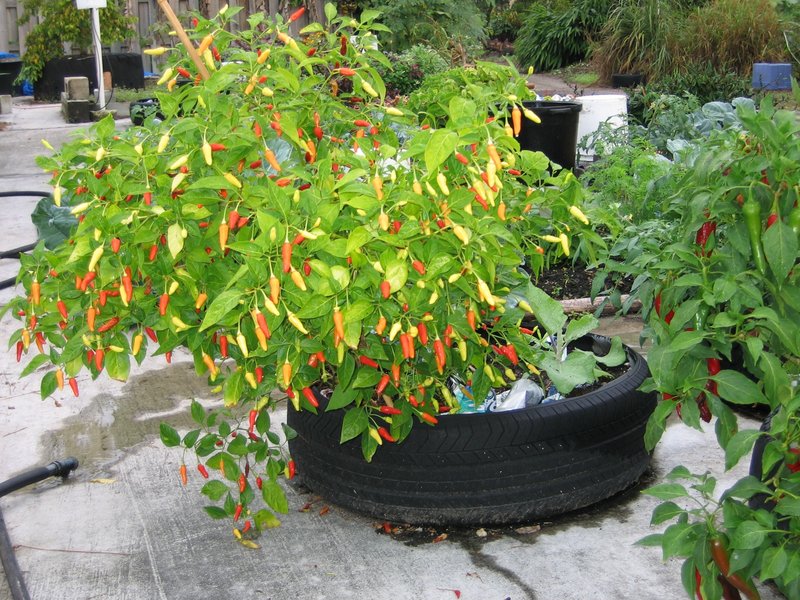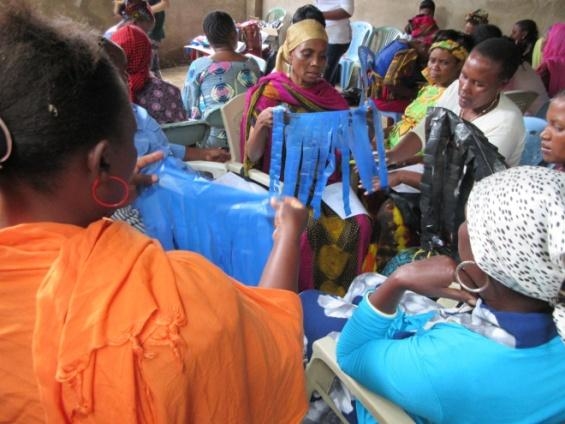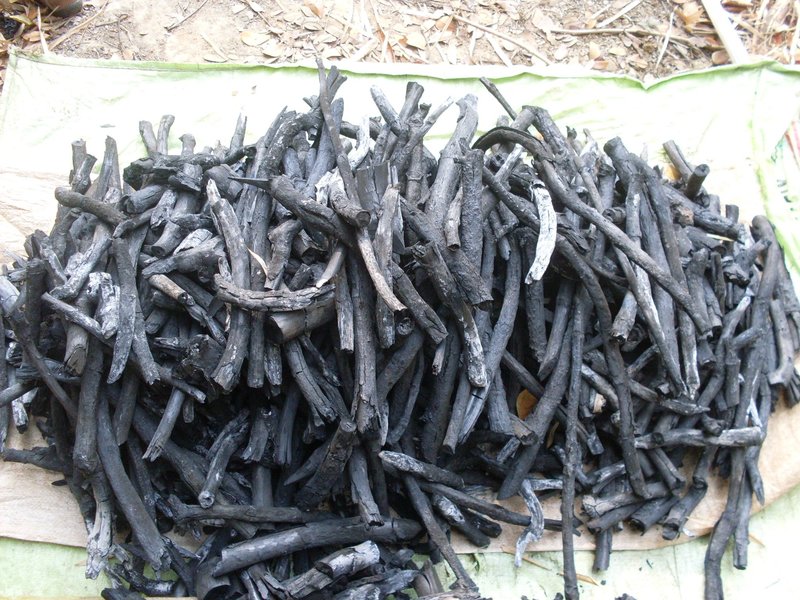Mises à jour de ECHOcommunity
Numéro 131 - Maintenant disponible 2016-04-08
Sommaire:
- Jardins Potagers au Burundi – « La nouvelle façon de cultiver des légumes »
- L’utilisation de l’extrait de feuilles de moringa comme un activateur de la croissance des cultures efficace et facile
- Les Échos de Notre Réseau - Roland Bunch, 5 ans en Afrique
- Banque de Semences d’ECHO: points saillants de semences de légumineuses (voir la version téléchargeable)
- Livres, Sites Web et Autres Ressources (voir la version téléchargeable)
Jardins Potagers au Burundi – « La nouvelle façon de cultiver des légumes »
Sara Delaney, responsable des programmes, aux Programmes internationaux d’Episcopal Relief & Development
Sara Delaney a présenté un exposé lors de la Conférence internationale de ECHO sur l’agriculture en Novembre 2015. Un projet q’elle avait mentionné a eu des taux d’adoption remarquables, et nous avons pensé que ce serait un bon cas d’étude à partager dans EDN. Au cours de l’introduction de nouvelles idées ou pratiques, pourquoi certaines sont-elles acceptés plus facilement, plus rapidement ou à plus grande envergure que d’autres? Cet article propose quelques raisons pouvant expliquer le succès de départ des jardins potagers au Burundi, et partage également une méthode pour essayer de mesurer l’impact que les jardins potagers auront sur la sécurité alimentaire et la nutrition des familles qui les utilisent.
Extrait: "Le Burundi est l’un des pays les plus petits et les plus densément peuplés sur le continent africain. Si vous passez un peu de temps là-bas, vous verrez des gens dans les rues de la ville, marchant sur les routes entre la ville et le village, dans les champs vallonnés ... partout!"
"Le Burundi est également très vallonné. La topographie présente des collines presque en continue, menant sur les rives du grand lac Tanganyika. Cela donne de beaux paysages, mais aussi de grands défis. Les collines sont sujettes à l’érosion des sols, et l’accès aux terres est difficile et cela s’accentue, d’autant plus que la population est croissante. Les infrastructures, l’approvisionnement en semences et l’accès au marché sont limités. Les maladies des cultures d’Afrique orientale tels que le flétrissement bactérien de la banane ou flétrissement bactérien Xanthomonas et la mosaïque du manioc ont fait leur apparition dans le pays."
Télécharger et partager des notes de développement #131
Network Member Profile: Semilla Nueva 2016-04-05
The mission of Semilla Nueva is to develop locally-led farmer education programs that increase the income, rebuild the soils, and improve the food security of Guatemala’s rural poor. This ECHOcommunity network member organization is using farmer-to-farmer training to empower farmers with the knowledge and tools they need to experiment with new, sustainable, techniques and to share their results with others.
Guatemalan small-scale farmers are in need of improved access to nutritious crops. Semilla Nueva is helping to provide seed and support for three specific crops: Chaya, Pigeonpea, and Quality Protein Maize.
Chaya, or tree spinach, is perennial source of protein native to the region. Chaya has been a traditional source of protein for the Mayan people, and the plants can be used as natural fencing. Through nutrition programs and cooking classes Semilla Nueva is working with Guatemalans to increase the growth and consumption of this nutritious vegetable.
Maize is a major food source for Guatemalans, however reliance on low-protein varieties for a large part of their dietary intake has contributed in no small way to malnutrition and stunting in some populations. Semilla Nueva is researching and promoting a variety of Quality Protein Maize (QPM) that has been bred to be a complete protein source. With 90% of the protein of milk, QPM is a non-gmo corn variety that can be used to increase the diversity of Maize available and improve the nutritional value of traditional meals.
Along with new varieties of Maize, Semilla Nueva is promoting the agricultural practice of intercropping, specifically focusing on growing Maize and Pigeonpea in the same field. Another traditional crop, Pigeonpea is a highly nutritious bean that grows well between rows of Maize as a green manure cover crop, improving the soil through fixing atmospheric nitrogen.
Latin America and ... Chaya Maize Quality Protein Maize Green Manures and ... Pigeon Pea
EDN Numéro 130 - Maintenant disponible 2016-04-01
Sommaire:
- Les contaminants des pneus dans une perspective de cultures en contenants
- Du papier Cyantesmo pour détecter le cyanure
- Utilisation efficace des ateliers dans la vulgarisation agricole
- Les Échos de Notre Réseau
- Banque de Semences d’ECHO: Semences de Légumes a Souligné [ PDF ]
- Livres, Sites Web et Autres Ressources [ PDF ]
- Évènements à Venir [ PDF ]
Extrait: Les contaminants des pneus dans une perspective de cultures en contenants
En essayant de trouver des contenants de plantation abordables dans les pays en développement, les organisations et les travailleurs ont partout favorisé l’utilisation d’une ressource de déchets facilement disponible: les pneus. Au fil des ans, beaucoup ont demandé à savoir si oui ou non les pneus contiennent des produits chimiques nocifs qui pourraient s’introduire dans vos cultures. Cet article a été écrit pour communiquer ce que nous avons trouvé après des recherches dans la littérature sur le sujet.
Une grande partie de la littérature sur le sujet se rapporte à des pneus qui ont été recyclés en petites particules. Comparativement à la paroi latérale d’un contenant en pneu, la surface du pneu en contact avec la terre de plantation est beaucoup plus grande avec de petits morceaux de caoutchouc. Une grande partie des informations disponibles se rapporte également à des toxines dans des cendres de pneus brûlés ou celles lixiviées à partir de matériaux de pneumatiques soumis à des solutions fortement acides. Les contenants de jardin en pneus ne sont pas bien sûr convertis en cendres. En outre, la terre utilisée pour faire pousser les plantes dans des pneus n’est presque pas aussi acide que les solutions souvent utilisées pour étudier les contaminants dans les lixiviats de pneus.
Néanmoins, les pneus contiennent bel et bien des quantités infimes de quatre métaux qui sont connus pour être toxiques pour l’homme. La plupart des discussions ci-dessous se rapporte à des éléments métalliques, mais il y a aussi une brève discussion sur les contaminants organiques. L’article se termine avec des pratiques suggérées pour rendre le jardinage dans les pneus aussi sûr que possible. Cet article ne vise pas à être exhaustif ou définitif. En fonction des commentaires et de ce que nous aurons appris, nous sommes ouverts à des articles de complément....
Télécharger et partager des notes de développement #130
West African farmers benefit from in-field trainings 2016-03-28
Training participants in Koaran, Burkina Faso are praising the qualities of local workshops held in their community. Located about 250km from the capital, Ouagadougou, this remote village is one that is benefitting from farmer-to-farmer instruction.
Across West Africa, this educational style has proven to be effective and desirable. Groups are usually limited to about 30 farmers, but due to enthusiasm, recent trainings have included more than 50 participants.
These events cover a wide range of agricultural practices, underutilized crops, and appropriate technologies such as FFF(FGW), family gardens, Moringa, biogas, and small-scale livestock.
The advantages of these "in-context" trainings are felt by both teachers and participants. Presenters are better able to understand the village's unique situation and available resources; and report that participants follow closely to whomever is teaching and ask a lot of questions.
West Africa FFF Moringa Biogas Field Training Agriculture Extension
Empowering Tanzanian women using environmentally-conscious initiatives 2016-03-14
Waste plastic shopping bags are a plentiful resource that can be found in fields, along roadsides, and in garbage piles around the world. By repurposing this resource, MIT students in Arusha Tanzania are empowering women and improving the environment through a plastic recycling program.
The project aims to improve the lives of people in three ways: First the project aims to reduce the amount of waste plastic bags and increase environmental awareness by emphasizing the potential usefulness of "waste products." Second, the project aims to provide an economic opportunity to women by creating new products out of the plastic bags. And finally, the project provides customers with quality, environmentally-conscious products such as reusable grocery bags.
 Through interactive workshops, women are learning how to create plastic yarn, or plarn, from waste plastic. Each workshop also includes a design challenge which is meant to urge participants to be creative and think of new ways to use the repurposed material. During these challenges the women are divided into teams to design an outfit using just 5 plastic bags, tape, and scissors. The exercise attempts to show the versatility of the bags and the potential of creating new products.
Through interactive workshops, women are learning how to create plastic yarn, or plarn, from waste plastic. Each workshop also includes a design challenge which is meant to urge participants to be creative and think of new ways to use the repurposed material. During these challenges the women are divided into teams to design an outfit using just 5 plastic bags, tape, and scissors. The exercise attempts to show the versatility of the bags and the potential of creating new products.
The Tanzanian women involved in the initiative commonly create economic income by creating artisinal products such as soap or jewelry. The plarn products add a potential additional income source with little to no cost of materials for the artisans. As the plarn makes attractive and useful reuseable shopping bags a disposable product is turned into a more durable alternativel and a new, more environmentally conscious, product is introduced into the marketplace.
ECHO TN#82: Le SRI, Système de Riziculture Intensive - Moins peut être plus 2016-02-26
Extrait : Le Système de Riziculture Intensive (SRI) est une méthode de culture du riz qui produit des rendements nettement plus élevés avec la plantation de beaucoup moins de semis et l’utilisation de moins d’intrants que les méthodes traditionnelles (c’est-à-dire d’inondation) ou les méthodes plus « modernes » (utilisant des engrais minéraux ou agrochimiques). Cette approche implique l’utilisation de diverses pratiques de gestion des plantes, du sol, de l’eau et des éléments nutritifs. Le SRI a été utilisé avec succès dans un certain nombre de pays et a été largement promu par le Dr Norman Uphoff avec l’Université de Cornel.
Qu’est-ce que le SRI ?
Le SRI implique l’utilisation d’une combinaison de pratiques de gestion qui optimisent les conditions de croissance des plants de riz, en particulier dans la zone racinaire. Il a été développé à Madagascar au début des années 1980 par le père Henri de Laulanie, un prêtre jésuite qui a passé plus de 30 ans à travailler avec les agriculteurs dans ce pays. En 1990, l’Association Tefy Saina (ATS) a été formé en tant qu’ONG malgache afin de promouvoir le SRI. Quatre ans plus tard, l’Institut international Cornell pour l’Alimentation, l’Agriculture et le Développement (en anglais CIIFAD), a commencé à coopérer avec Tefy Saina pour introduire le SRI autour du Parc National de Ranomafana dans l’est de Madagascar, soutenu par l’Agence Américaine pour le Développement International. Il a depuis été testé en Chine, en Inde, en Indonésie, aux Philippines, au Sri Lanka et au Bangladesh avec des résultats positifs.
A new pulse variety from the ECHO Global Seed Bank 2016-02-25
The FAO has named 2016 the Year of the Pulse. The ECHO Florida seed bank is now offering ‘Caqui’ pigeon pea seeds, a variety originally acquired from Agroforester Tropical Seeds in Hawaii. Pigeon peas are small bushing legumes that are drought tolerant and can be grown on a wide variety of soils. They are often used in intercropping, as hedgerows for windbreaks, and for shade for when establishing plantation crops. Being a legume, pigeon peas fix nitrogen and can be utilized to increase soil fertility. The foliage of pigeon peas makes an excellent livestock fodder and the stems can be used for firewood. Most notable are the edible peas, which can be shelled when young and green or harvested when mature as a dry bean
‘Caqui’ is a variety that performed very well on the global farm this winter. It is a long duration pigeon pea (about 200 days to harvest) and the branches were loaded with seed pods. If you are a member of ECHO Community (Active Development Worker or Individual Premium), you can order a trial packet of these seeds to try out in your area.
ECHO Note Technique #76 - "Production de charbon de bois dans des fours à tambour horizontaux de 200 litres" maintenant disponible en français 2016-02-18
Extrait: Jusqu’à récemment, le bois de chauffe était pris pour acquis dans le nord de la Thaïlande. Avec de vastes forêts pleines de nombreux types d’arbres, les ménages des hautes terres pouvaient se permettre d’être difficiles concernant le bois qu’ils utilisaient pour la cuisine.
Cependant, au cours des dernières années, de plus en plus de communautés font face à des restrictions d’accès aux produits forestiers en raison de la création de parcs nationaux. Dans de nombreuses régions, la déforestation causée par des activités agricoles, tels que l’intrusion des grandes plantations, entraîne également la réduction de l’accès au bois de chauffe.
Dans les communautés des hautes terres, les combustibles de cuisson de types commerciaux comme le propane ne sont pas facilement accessibles et abordables. Avec des choix limités, les communautés et les organisations de développement ont commencé à envisager les combustibles alternatifs.
Did you know? It's the year of the Pulse! 2016-02-18
The UN Food and Agriculture Organization (FAO) has announced that 2016 is the "International Year of Pulses." The FAO defines pulses as a type of leguminous crop that is harvest solely for the edible dry seed. Common examples include dried beans, lentis, and peas. Packed with nutrients; these crops deliver both a high protien content and high levels of soluble fiber. Pulses are an important crop for farmers when considering improving food security and marketability. Recommended by health organizations, pulses can be beneficial to people suffering with diabetes and various heart conditions.
Since pulses are nitrogen fixing, these crops are known for improving soil fertility and extending the productivity of the land. Pulses are appropriate for small-scale farmers, often utilized in techniques such as intercropping, rotational agriculture, and as cover crops. Their versatility promotes biodiversity and assists in the minimization of pests and some diseases.
How have pulses been an important part of your work? Share in the COMMENTS.
Additional resources on pulses:
- ECHOcommunity Plant Information Sheets (pulse category)
- The ECHO Global Seedbank offers trial pulse seeds worldwide
- The ECHO Asia Seedbank offers regionally specific trial pulse seeds to those working in Asia
- The FAO has a full website dedicated to pulse resources for 2016
School Garden Project Brings Hope to Refugee Students 2016-02-09
The elementary garden club at Dalat International School in Penang, Malaysia is reaching out to help Burmese Rohyngya refugees. The club meets once a week to learn about good gardening practices and the principles behind the hydroponics. The students have been working on a small portable hydroponics unit with which they grow two types of spinach: local and Brazilian spinach, and both are growing nicely.
Through their instructor, Lisa Munson, the students have provided support for sharing this hydroponics kit with a refugee school in Penang as a way to help the students there. The students have also have shared the knowledge they have gained about sustainable gardening from their hands-on exploration.
 Most of the plants at the refugee school are growing well and the students are assigned roles to care for the plants, which has been a positive opportunity for them. However, due to the issues surrounding the refugee situations, all the plants have to grow behind locked doors; there is a possibility that if plants are grown outside, they would be stolen. The indoor room condition has caused some of the plants to die, but moringa, basil, and spinach are still growing well.
Most of the plants at the refugee school are growing well and the students are assigned roles to care for the plants, which has been a positive opportunity for them. However, due to the issues surrounding the refugee situations, all the plants have to grow behind locked doors; there is a possibility that if plants are grown outside, they would be stolen. The indoor room condition has caused some of the plants to die, but moringa, basil, and spinach are still growing well.
More Resources:
- Some of the seeds for this project were sourced from the ECHO Asia Seed bank.
- Community garden resources and Community Garden Toolkit [PDF]









